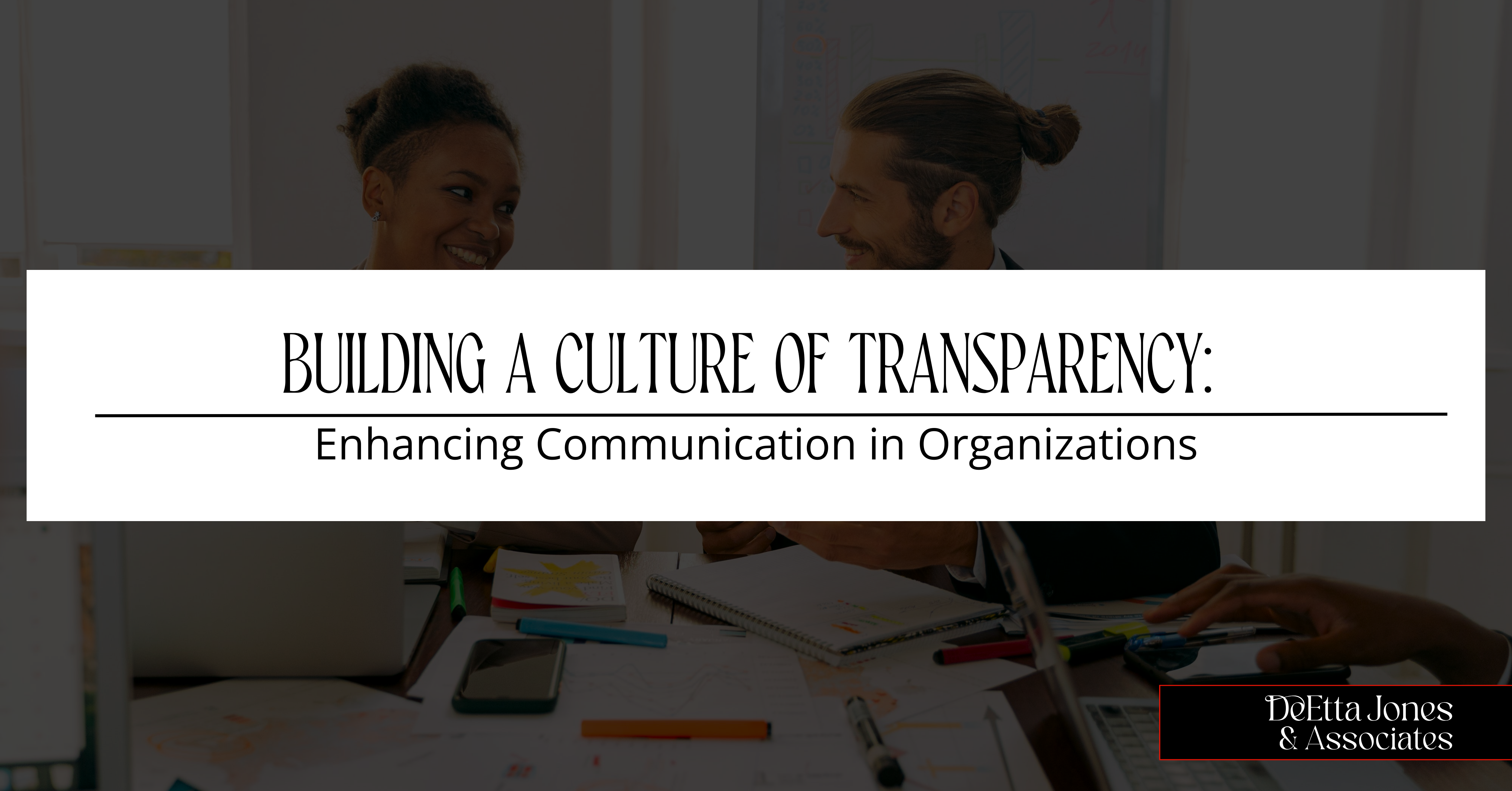|
Are any of these statistics startling to you? Transparency is one of the most used words and requested acts by employees of their managers and leaders. However, what transparency is, why it is so incredibly important, and how to ensure more of it is present seems to be elusive, particularly to many managers and leaders who have the ball squarely in their court.
| What is Transparency in Organizational Culture? |
Transparency is the act of sharing information relevant to individuals who will be impacted by, or expected to implement, decisions in a manner that:
- encourages input
- ensures no surprises
- elicits their buy-in
Transparency lives in the process. Transparency doesn’t mean that all information must be shared fully and indiscriminately. It doesn’t mean that everyone’s opinion will always have equal weight in decisions. It doesn’t preclude one person or a small group from making a decision on behalf of others. Transparent leaders communicate what is happening, why and how it is happening, and any expected impact on people directly or indirectly involved in decisions made. You treat people like adults.
|
Top 4 Benefits of Nurturing a Culture of Transparency in Your Organizations |
- It fosters trust among employees. When information is openly shared, employees feel valued and respected, leading to stronger relationships and a more positive work environment. Trust is crucial for collaboration and teamwork, as it encourages individuals to freely express their ideas and opinions without fear of judgment or reprisal.
- Transparency promotes accountability. When employees have access to information about the organization's goals, strategies, and performance, they can better understand their role in achieving those objectives. This clarity empowers individuals to take ownership of their work and be accountable for their actions. Implementing a culture of transparency often requires a shift in mindset and behavior, which can be met with resistance from individuals who are comfortable with and/or benefit from the status quo. Many times, I’ve encountered organizations where people have become accustomed to a secretive organizational culture, and the idea of sharing information and being more open can be met with skepticism or even hostility. Overcoming this resistance requires effective change management strategies - strategies where transparency is foundational - such as clear communication, training, and involving employees in the process of changing the culture, leading to increased productivity and efficiency.
- A culture of transparency enhances decision-making, more specifically, buy-in and support for implementation of decisions. In the wise words of management consultant extraordinaire, Margaret Wheatly, "people support what they create." Employees want to understand what process is being used, what decisions are being considered and why, how their input will be solicited and used, the potential impacts to them, and who is ultimately driving the process. This knowledge enables employees to make more informed decisions at their own level and align their actions with the organization's overall goals.
- Transparent decision-making processes reduce the likelihood of misunderstandings or conflicts arising from hidden agendas or favoritism.
| Beware of, and Overcome, the Challenges |
One of the challenges in implementing a culture of transparency is the fear of vulnerability. In many organizations, individuals may be hesitant to share information or express their opinions openly due to concerns about how they will be perceived by their colleagues or managers. This fear can hinder the development of a transparent culture, as people may choose to withhold information or avoid difficult conversations to protect themselves from potential negative consequences. Overcoming this fear requires creating a safe and supportive environment where individuals feel comfortable being open and honest without fear of judgment or retribution, a psychologically safe workplace.
As mentioned above, establishing a culture of transparency frequently demands a transformation in attitudes and actions. The practice of transparency can be met with opposition from those content with the status quo, or as is more often the case, just afraid of the unknown. For example, in some organizational cultures, the default is “confidential” rather than “open.” In these contexts, the idea of sharing information and being more open can be met with resistance or even hostility, particularly by people who may derive a sense of power from withholding information. Overcoming ingrained and limiting cultural norms takes explicit communication, training that equips people with practical alternatives, and active engagement of the entire workforce.
Making excuses about why you avoid exerting the additional effort of including other perspectives and sharing information that impacts the lives and livelihood of your colleagues is easy, particularly when connected to a narrative of "that's just how we do things here." But old narratives are being interrogated everywhere. Yours should be, too. Your organization's and colleagues' ability to thrive is dependent on leaders and managers understanding and shifting to new expectations of you. Inclusive leaders and managers take the long view. You know that now is the time to slow down enough to listen and learn, develop new skills, and normalize practices that reflect new expectations.
|
For more on building successful organizations, join us for the Inclusive Manager’s Toolkit, April 1 - June 27, 2024. |

